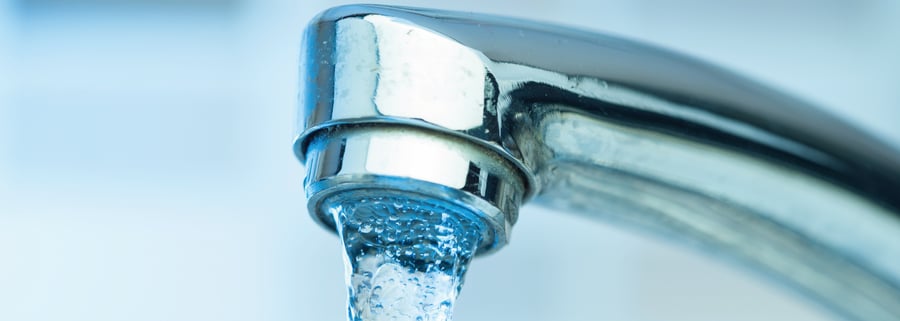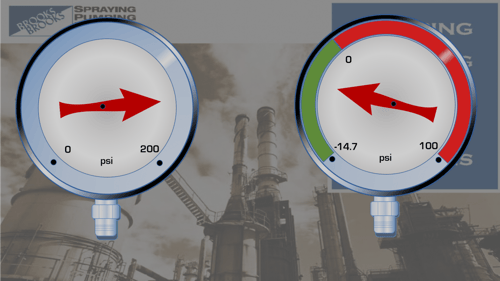Small Potable Water Systems: Design Options and Challenges. Part 1

North America has some of the best and safest water supply networks around the globe. According to a report by the Environmental Protection Agency (EPA), more than 286 million people get their drinking water from water systems that serve the community, but do you know how many steps are involved in treating the water to make sure that its quality meets the strict sanitary and environmental requirements?
This guide looks at the foundational principles of designing a small potable water system, exploring the types of water contaminants and water systems widely used today. This article is based on our webinar, which you can watch here.
Types of Water Sources and Contaminants
There are two primary sources for public water systems: surface water and groundwater.
- Surface water is accumulated in water bodies, such as lakes and rivers, and gets piped and pumped to water treatment plants for further distribution. About 64% of public water systems (PWS) rely on surface water.
- Groundwater, in turn, is stored in natural aquifers–geologic formations of soil, sand, and rock–and supplies water to the remaining 36% of PWS.
What Contaminants are found in Surface Water?
Almost all drinking water sources today contain some contamination and require appropriate treatment to remove the inherent contaminants. For example, groundwater has a high quantity of dissolvable solids, and the biggest issue with any surface water is the high level of organics and pathogens.
What’s more, untreated water can contain protozoans, bacteria, and viruses:
- Protozoans. From the perspective of designing potable water systems, we should worry about two types of protozoans: Giardia and Cryptosporidium, the most commonly detected pathogens associated with diarrhea in humans.
- Bacteria. Coliforms are the bacterium types we should also be concerned about due to their pathogenic nature. They are always present in the digestive tracts of humans and animals, but when they cause fecal contamination of water, it becomes a serious problem. If coliform bacteria, especially E. Coli, are present in your drinking water, the risk of contracting a water-borne illness increases.
- Viruses. More than 140 types of enteric viruses can cause gastrointestinal and acute illnesses and some chronic diseases if the water is not treated correctly.
Types of Water Systems
In Canada, water systems are owned either by the Federal Government, Provincial Government or by First Nations Communities. There are some privately owned systems as well. Water systems can be categorized according to different criteria. For instance, the size of the community they serve:
- Very small water systems serve around 25 to 500 people.
- Small water systems serve 500 to 3,300 people.
- Medium water systems provide water to over 3,300 to 10,000 people within the same community.
- Large water systems can serve from 10,000 to 100,000 community members.
- Very large water systems can facilitate water supply to over 100,000 people.
Water systems are also categorized according to where they get their water from. The sources include:
- Groundwater pumped from wells
- Surface water residing within rivers, fresh wetlands, and lakes
- Water from a different water system
Treatment of Surface Water and GUDI
Surface water follows a natural replenishment cycle, procured through precipitation and naturally reduced through groundwater recharge and evaporation.
GUDI is an acronym for Groundwater Under the Direct Influence of surface water. It includes all forms of raw water under the ground and the influence of surface water. It refers to all situations where microbial pathogens in the water can travel through an aquifer into water wells. It’s important to remember that GUDI will have some characteristics of surface water and some groundwater.
When designing a small water treatment plant, water analysis is the most important source of information you monitor closely. Pay special attention to turbidity, total suspended solids (TSS), and organic matter levels for raw surface water. Regarding GUDI water, the most alarming characteristic is the high levels of water pathogens and contaminants we mentioned previously.
Multi-Barrier Approach to Water Safety
The process of ensuring the provision of safe water requires an understanding of the different stages that are involved in the transportation of water to your tap. This understanding comes with acknowledging the different characteristics of water and the issues that can come it's way. The threats to water quality can be created by human activity, such as industrial practice and agricultural activities or naturally, because of flooding or droughts.
The multi-barrier approach to water safety understands all these threats and ensures multiple barriers are in place to minimize the threats to water quality. The approach includes the following barriers:
- Protection of water sources
- Water treatment
- Distribution system
- Monitoring for system failures
- Acting promptly in case of failure and communicating with the public and health authorities
LT2ESWTR Strategy
The LT2ESWTR Strategy or the Long Term 2 Enhanced Surface Water Treatment Rule addresses all the health effects of Cryptosporidium in drinking water. Requirements in LT2ESWTR ask all systems to do the following:
- Collect water samples and test them for E. coli
- If E. coli results exceed the required amount, the water should also be tested for Cryptosporidium.
- If the Cryptosporidium exceeds the required amounts, you should have additional treatment to clear water from your system and meet the requirements.
In the first part of this article, we introduce you to the first steps of designing a small potable water system. Coming up, we’ll explore the main challenges you might encounter when designing a PWS and offer solutions to overcome them efficiently. Subscribe to our blog and receive the second part of this guide straight into your inbox!
John Brooks Company Filtration Experts solve water filtration PROBLEMS
At John Brooks Company, we provide standard and custom-built filtration systems for various commercial, municipal, and industrial processes, including agriculture, food manufacturing, oil and gas, mining and mineral processing, and more.
With a massive selection of filtration systems from leading manufacturers and valuable input from our application experts and equipment specialists, we guarantee the best fit for your unique application.
Contact us today to learn more or to book a consultation with one of our experts.



